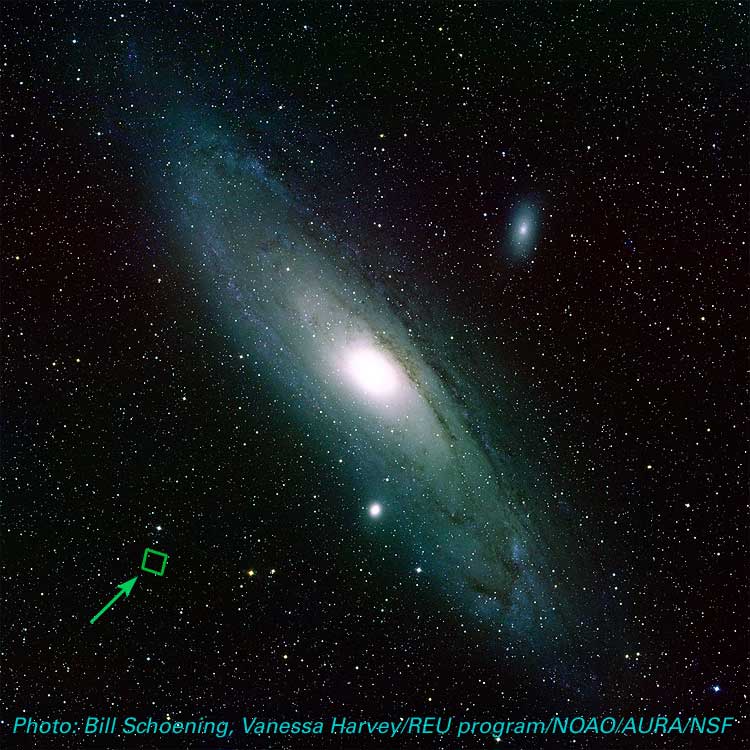
 Copyright © Michael Richmond.
This work is licensed under a Creative Commons License.
Copyright © Michael Richmond.
This work is licensed under a Creative Commons License.
An optical photograph of an ordinary spiral galaxy shows a bulge at the center, surrounded by a disk of gas and stars.

When we look at radio waves emitted by neutral hydrogen gas in our Milky Way Galaxy, we see small variations in the frequency -- or wavelength -- from place to place. For example,
in lab: wavelength 21.10594 cm
Cloud A: wavelength 21.11298 cm
Cloud B: wavelength 21.10172 cm
Q: What is the speed of Cloud A?
Which direction is it moving?
Q: What is the speed of Cloud B?
Which direction is it moving?
If we combine all our measurements of the motions of gas in different locations of the Milky Way, we find out that the galaxy is rotating. The gas and stars are moving in (nearly) circular orbits around the center, (almost) all of them in the same direction.
We can compare the orbital speeds of different clouds as a function of their distance from the center of the Galaxy. Here's what we find:

The orbital speed remains nearly constant with orbital radius. This is a general feature found in the rotation curves of many galaxies, not just the Milky Way.
Q: Does this make sense?
If we look at the motions of the planets in our own solar system, we see quite a different pattern:

We can explain the smooth drop in orbital speed as a function of orbital radius simply: the gravitational force on planets drops with distance, as 1/r2, which causes the orbital speeds to decrease as well.
Q: How can the orbital speed of objects in the
Milky Way NOT decrease with radius?
This mystery has puzzled astronomers for decades. The best explanation so far is that there is a good deal of dark matter in our galaxy, and other galaxies. This material, unlike the stars we can see, is NOT concentrated at the center, but spread out over the entire galaxy.
 Copyright © Michael Richmond.
This work is licensed under a Creative Commons License.
Copyright © Michael Richmond.
This work is licensed under a Creative Commons License.